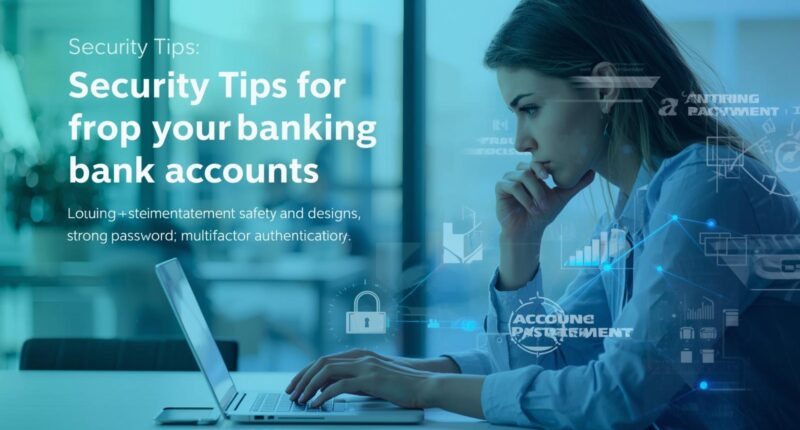Online Security Tips to Protect Your Bank Accounts
As online banking becomes the standard, protecting your digital finances has never been more important. Cybercriminals continue to develop advanced methods to steal personal and financial information. That’s why knowing the best online security tips to protect your bank accounts is critical for safeguarding your money and peace of mind.
Why Online Security Tips to Protect Your Bank Accounts Matter
Bank accounts are primary targets for hackers because they provide direct access to funds. By following online security tips to protect your bank accounts, you can:
-
Reduce the risk of unauthorized access
-
Protect sensitive personal information
-
Detect fraud early
-
Maintain long-term financial security
Essential Online Security Tips to Protect Your Bank Accounts
1. Use Strong and Unique Passwords
Avoid simple or reused passwords. Instead, create strong combinations of letters, numbers, and symbols for your banking apps and websites.
2. Enable Two-Factor Authentication (2FA)
Most banks offer 2FA, which requires an additional code sent to your phone or email. This adds another layer of protection against unauthorized logins.
3. Avoid Public Wi-Fi for Banking
Public networks are often unsecured. Only access bank accounts on trusted, private Wi-Fi connections or use a VPN for extra security.
4. Regularly Monitor Your Accounts
Check your statements frequently to catch suspicious activity early. Many banking apps also offer real-time alerts.
5. Keep Devices Updated
Update your phone, computer, and banking apps regularly to patch security vulnerabilities that hackers exploit.
6. Beware of Phishing Scams
Cybercriminals often send fake emails or texts pretending to be from your bank. Always verify messages and never click on suspicious links.
7. Use Official Bank Apps Only
Download apps only from your bank’s official website or trusted app stores to avoid malicious versions.
8. Secure Personal Devices
Install antivirus software, lock screens with biometrics, and encrypt devices where possible.
Table: Online Security Tips to Protect Your Bank Accounts
| Security Tip | Why It Matters | Best Practices |
|---|---|---|
| Strong Passwords | Prevents brute-force attacks | Use 12+ characters, mix of symbols |
| Two-Factor Authentication | Adds extra login security | Enable SMS/email/app-based 2FA |
| Avoid Public Wi-Fi | Reduces risk of data interception | Use VPN or private network |
| Account Monitoring | Detects suspicious transactions early | Set up instant transaction alerts |
| Device Updates | Protects against new threats | Regular OS & app updates |
| Phishing Awareness | Avoids falling for fake bank messages | Verify URLs and sender details |
| Official Bank Apps | Prevents malware exposure | Download from official sources only |
| Device Security | Ensures overall system protection | Antivirus, biometrics, encryption |
This table highlights the most effective online security tips to protect your bank accounts in 2025.
Common Mistakes to Avoid
Even when applying security measures, many users make errors such as:
-
Using the same password for multiple accounts
-
Clicking on phishing links without verifying
-
Ignoring software updates
-
Conducting transactions over unsecured networks
Internal and External Resources
👉 For related guidance, check:
How Biometric Technology Enhances Digital Banking Security
👉 For official banking security practices, visit:
Federal Trade Commission – Online Security
Final Thoughts on Online Security Tips to Protect Your Bank Accounts
As financial activity continues to shift online, protecting your digital accounts is not optional—it’s essential. By applying the best online security tips to protect your bank accounts, you can minimize risks and stay one step ahead of cybercriminals.
To recap:
-
Use strong passwords and enable 2FA
-
Avoid public Wi-Fi for banking transactions
-
Monitor your accounts regularly for fraud
-
Stay alert to phishing scams and fake apps
-
Keep devices secure and updated
With vigilance and smart practices, you can ensure your financial assets remain safe in 2025 and beyond.









